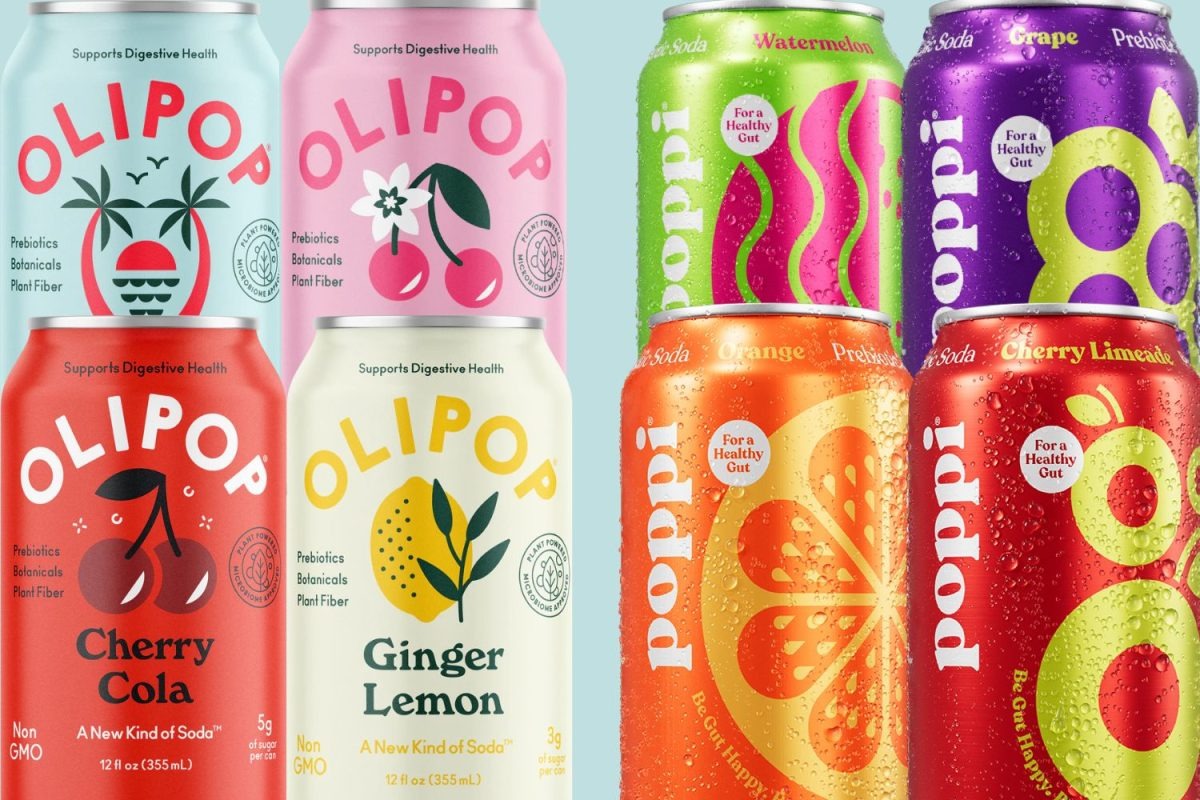
General News
Soda brands like OLIPOP and Poppi are steadily making their way to the forefront of store shelves at retailers like Target and major grocery chains. But how do they compare to the classic sodas consumers know and love?
Consumers across social media platforms such as TikTok and Instagram have been buzzing about these new probiotic sodas. Marketed as healthier alternatives to flavors like root beer or Dr. Pepper, these drinks aim to mimic the classics while offering added health benefits. The growing buzz has sparked a range of opinions online, with users debating taste, nutritional value and pricing.
Probiotic sodas are carbonated drinks infused with prebiotic fibers, which are believed to support gut and digestive health. Similar to kombucha, these beverages have gained fame thanks to brands like OLIPOP and Poppi. Their popularity skyrocketed after gaining attention on TikTok, where they’ve been touted as a healthier swap for sugary soft drinks.
Despite the hype, reviews of these sodas are mixed. Eve Irwin, a TikTok user, shared her experience trying OLIPOP’s Doctor Goodwin, a supposed alternative to Dr. Pepper.
“I was so excited to try a healthy version of Dr. Pepper,” Irwin said. “But I was severely disappointed. It didn’t have that kick or sweetness I was expecting—it just felt flat.”
Many consumers have echoed Irwin’s sentiments, often citing a lack of bold flavor compared to traditional sodas. Others, however, argue that the health benefits outweigh the taste.
“I didn’t love it at first, but when I looked at the nutrition label, I realized I could get used to it,” said Catherine Harris, a health-conscious shopper.
One of the main concerns for consumers is the price difference. At Target, a four-pack of OLIPOP costs $9.49, while a 10-pack of Coca-Cola sells for $6.39. For some, the steep price tag makes probiotic sodas a hard sell.
However, the nutritional differences are stark. A single 12-ounce can of OLIPOP contains nine grams of fiber, while a regular Coca-Cola contains none. OLIPOP also boasts just three grams of added sugar compared to Coca-Cola’s 39 grams.
“I’ve been trying to cut back on sugar, so OLIPOP was an easy choice,” said Harris. “Sure, it’s pricier, but I feel better knowing I’m not drinking 39 grams of sugar in one sitting.”
Probiotic sodas are carving out their own niche in the beverage market, offering something entirely different from the nostalgic flavors of traditional sodas. Despite their benefits, many consumers remain skeptical about whether the healthier choice is worth sacrificing taste.
“I’ll stick with Coca-Cola. It might not be healthy, but it’s what I grew up with,” said Irwin. On the other hand, younger consumers are embracing the shift toward gut-friendly options.
As you peruse the soda aisle at your local grocery store, you’ll notice an increasing number of options catering to different health and taste preferences. For those willing to compromise on sweetness and spend a little extra, prebiotic sodas like OLIPOP and Poppi might be a refreshing choice. For others, the nostalgic comfort of a traditional soda may still win first place.
Whether probiotic sodas are a passing trend or a lasting staple remains to be seen, but for now, the debate continues.
Post a comment